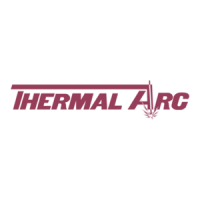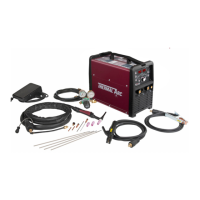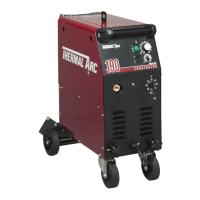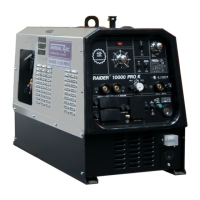Do you have a question about the Thermal Arc 161 S and is the answer not in the manual?
Details hazards, warnings, and precautions related to electric shock and arc welding processes.
Covers fire prevention, housekeeping, ventilation, personal protection, and handling of hazardous substances.
Lists key ANSI, OSHA, NFPA, and other safety standards relevant to welding and cutting operations.
Explains various symbols used on the welding equipment and within the manual for clarity.
Provides guidance on understanding the manual's structure, including warnings, cautions, and notes.
Explains how to identify the unit and what to do upon receiving the equipment, checking for damage.
Details the welding machine's compact design, current range, and TIG/STICK capabilities.
Offers guidance on safely moving and lifting the welding unit to prevent injury or damage.
Provides technical data including voltage, current, duty cycle, dimensions, and weight of the power source.
Specifies suitable environmental conditions and placement for safe welder operation.
Details how to properly connect the welder to the power supply and ensure correct grounding.
Discusses precautions for reducing electromagnetic emissions when using the welder.
Provides general guidance on connecting the work lead and electrode for welding operations.
Step-by-step instructions for setting up the welder for both STICK (SMAW) and TIG (GTAW) welding modes.
Covers the installation and use of the gas regulator and how to perform essential leak testing.
Explains how to finish using the regulator and proper procedures for storing it.
Explains the function of buttons, switches, and indicators on the welding machine's front panel.
Details how to set the welding current and explains the outlet scales for different voltages.
Explains electrode polarity for STICK and GTAW welding and the effects of stick welding on various materials.
Covers filler wire selection, tungsten ranges, gas selection, TIG parameters for steel, and general arc welding practices.
Provides guidance on preparing joints for welding and methods to minimize or overcome distortion.
Outlines the necessary cleaning and inspection procedures for the welding power source.
Addresses common issues encountered during STICK welding, providing possible causes and remedies.
Addresses common issues encountered during TIG welding, providing possible causes and remedies.
Helps identify and resolve problems related to the welding arc not establishing or output current issues.
| Input Phase | 1 |
|---|---|
| Input Frequency | 50/60 Hz |
| Output Current Range | 10 - 160 A |
| Input Voltage | 115/230 VAC |
| Duty Cycle | 30% at 160A |
| Welding Process | MIG, TIG, Stick |











